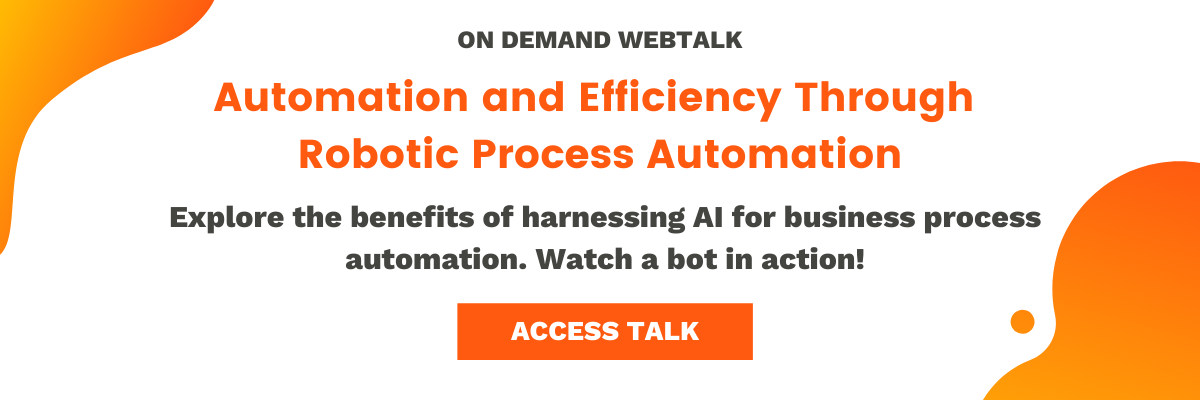Enterprise AI: Is your Business Ready for AI Adoption?
We’ll be among the first to sing the virtues of AI adoption in the modern business world. Breathing life into science fiction is a guilty pleasure of virtually anyone in the tech industry, not to mention those working in other business sectors keeping their eyes on artificial intelligence development. It’s a future worth being excited about as we have the opportunity to watch and nurture a growing field of rudimentary technology as it evolves before our very eyes.
A large part of what is making AI technology blossom is the sheer willingness that organizations have for implementing it into their infrastructure. Businesses interested in adopting AI are motivated mostly by the tech’s capacity to save operations time and money while getting tasks completed faster. AI adoption is more than just youthful imagination and excitement, it bears palpable and genuine value for nearly every available field: medicine, software development, law firms, construction, you name it
But does that mean that your business is ready for AI adoption?
The importance of assessing your own AI readiness before taking your first step cannot be understated. Just because every other company on the market seems to be incorporating AI technology doesn’t mean you should give in to peer pressure. After all, not every company is ready to adopt AI… yet. Useful as it is, AI adoption is a demanding process.
Regardless of your company’s size, deciding to implement artificial intelligence tech implies important changes within the way it operates. You’re essentially reformatting how everything inside the bounds of your organization works in order to acclimate to a new form of immersive technology. The extremes that AI goes to in each new framework varies, but change is imminent. There are a few things you must take into consideration before deciding to jump on the AI bandwagon.
Top Factors to Consider When Assessing Enterprise AI Readiness
So you’ve read the phrase “AI readiness”, and your next thought may be something along the lines of, “How can I objectively gauge whether or not my business is prepared for this next phase of my organization?” What are the numbers, the motivations, the resources, the capability you possess to pull this move off?
No one likes being handed a vague prompt and told to get to work. If you want to do something right, to assess something right, then you need an actionable place to begin. We’re going to include a few of the top factors you’ll need to take stock of in order to fully comprehend where your company stands in relation to AI readiness.
You Have an Innovation Strategy
Your core innovation strategy revolves around one thing: how can you implement this technology to gain a competitive advantage over your competition in the market? No new technology that’s dropped off on your doorstep is free from this brand of examination. Judging from what AI is capable of, what do you predict you’ll be able to accomplish with it?
You need to evaluate new technologies and trends first to determine if they would actually be of any use to your company’s current pressing issues, and if now is the right time to implement, and how they will affect your business. The important thing to understand is that this may well be the spot where you dump your hopes for AI adoption. If you find, through your evaluation, that AI technology will not be of any use, then there’s no reason to expend any more resources on it.
You Have Picked the Right Problem to Solve
Every AI needs a purpose, a task for which it is explicitly designed to handle. A part of the evaluation process is determining what, if any, issue is most appropriate for your AI technology to handle. Ai is wildly versatile, but it’s the perfect jack-of-all-trades tech it can be misconstrued as. Not every situation that can be solved through AI will be worth moving forward with. So, for starters, you need to establish the right problem to solve, then determine the right AI application for it.
To help assist you with the implementation of AI, Design Sprints are a four-phase process that utilizes design thinking to identify a business problem and find possible AI solutions quickly in just a matter of days. It’s an invaluable, clearly laid out series of steps to help you on the right track for determining what needs to be solved.
You’ve Carried a Cost-Benefit Analysis
What’s the tradeoff you’ll be looking at between what you’re putting in and how much you’re getting out of AI adoption? Every major maneuver you’ll make carries its own ROI balance, making it a baseline comparison for assessing the feasibility of AI trends.
When it comes to AI, for example, you can start by doing a current cost analysis of the manual tasks you want to automate through AI applications. Take into consideration labor costs, frequency of tasks, and the value they bring to your organization. Then you can go into researching costs of automation tools, teams, and management. This research may include talking to AI solution vendors and getting estimates for their services or final products.
Once you’ve completed your boots to the ground work, you should have a decent measure of how much AI adoption will contribute to enhancing your current business effectiveness and productivity. Whether you find that AI could double your effective output or barely compensate for its own implementation is important for informing your business plan.
Your Workforce Has an AI Mindset
AI adoption is a big change, we’ve made that clear. However, it’s one thing to know it’s going to impact your organization; it’s another to prepare for it. Those who are going to be most immediately affected by AI are going to be the employees, the workforce, as they’re the ones who will have to adjust most to its inclusion in their regular workday.
You’ve got time before AI technology rolls in and shakes the cage. The best way to prepare is to establish a new AI culture across your organization. In order to successfully implement AI, you must first make sure the people whose jobs will be directly affected by new tech are fully aware, trained, and on board. This ends up making the process seamless, painless, and easier on everyone. Keep in mind that this applies to all levels of your organization, meaning you’re going to have to learn a new thing or two yourself.
You Have The Right Team in Place
AI integration isn’t as easy as plugging a USB into your company and suddenly you have a smart program that works flawlessly. AI is complex, needing management and guidance to implement it well and fix it when it’s broken. You’re going to need a team for this. You can have the right in-house or third party AI team, but whatever you choose, deploying AI without the right team in place is one way to guarantee your strategy will fail.
You know how in spy and heist films, every team member has some special skill necessary to pull off the final stunt? Hackers, thieves, faces, muscle, you get the picture. Picture your in-house team like that, except less dramatic. In-house teams need a variety of skillsets to ensure they can handle the job, from data, software engineering, business, operations, team leading, and so on so forth. When assembling your in-house team, you must fully consider training investments for all levels, as well as getting them involved early on in the process.
It’s not exactly an easy scenario. It’s a lot of work and resources to pull together the kind of team you need to tackle your AI plan. That’s why there’s a second option: third party teams. Rather than make your own Ocean’s 11, a more fitting approach may be for you to hire an outsourcing company with expertise on AI solutions.
If you’ve read any of our other articles on outsourcing, you have a good idea of what it brings to the table. If not, let’s run down some of the benefits. You can get the same quality of work at a quarter of the cost, speeding up productivity by not tying your employees up with extra projects, and all the while reap the benefits of the USMCA with nearshore outsourcing companies right across the border in Mexico. If you’re interested in learning more, feel free to visit our AI Innovation Center.
Conclusion
No one ever said that integrating AI into the fabric of your company, fundamentally affecting how it functions, was going to be easy. However, by thoroughly evaluating the most important factors involved in AI adoption, you can make the process a whole lot more feasible to undertake. Let’s run through it real quick.
Start off by planning out your innovation strategy, which helps establish the big picture for what AI will do for your company. Then you’ll select the right problem to solve, depending how AI can be most useful and effective. Following that, a cost-benefit analysis, to see if AI will positively make up for the resources it consumes and will replace. Ensure that your workforce is ready to receive AI, and finalize by obtaining the right team to maintain your new AI program.
We mentioned some of the benefits briefly already, but we wanted to bring back around the opportunities you have for taking advantage of nearshore AI outsourcing in Mexico. Productivity, communication, cultural affinity, and cost-effectiveness are only a few benefits you’d be able to enjoy by taking part in this venture. Our contact page is always open, ready for any questions or interest you have in nearshore outsourcing. Pop on by for a visit.







Post Your Comment Here